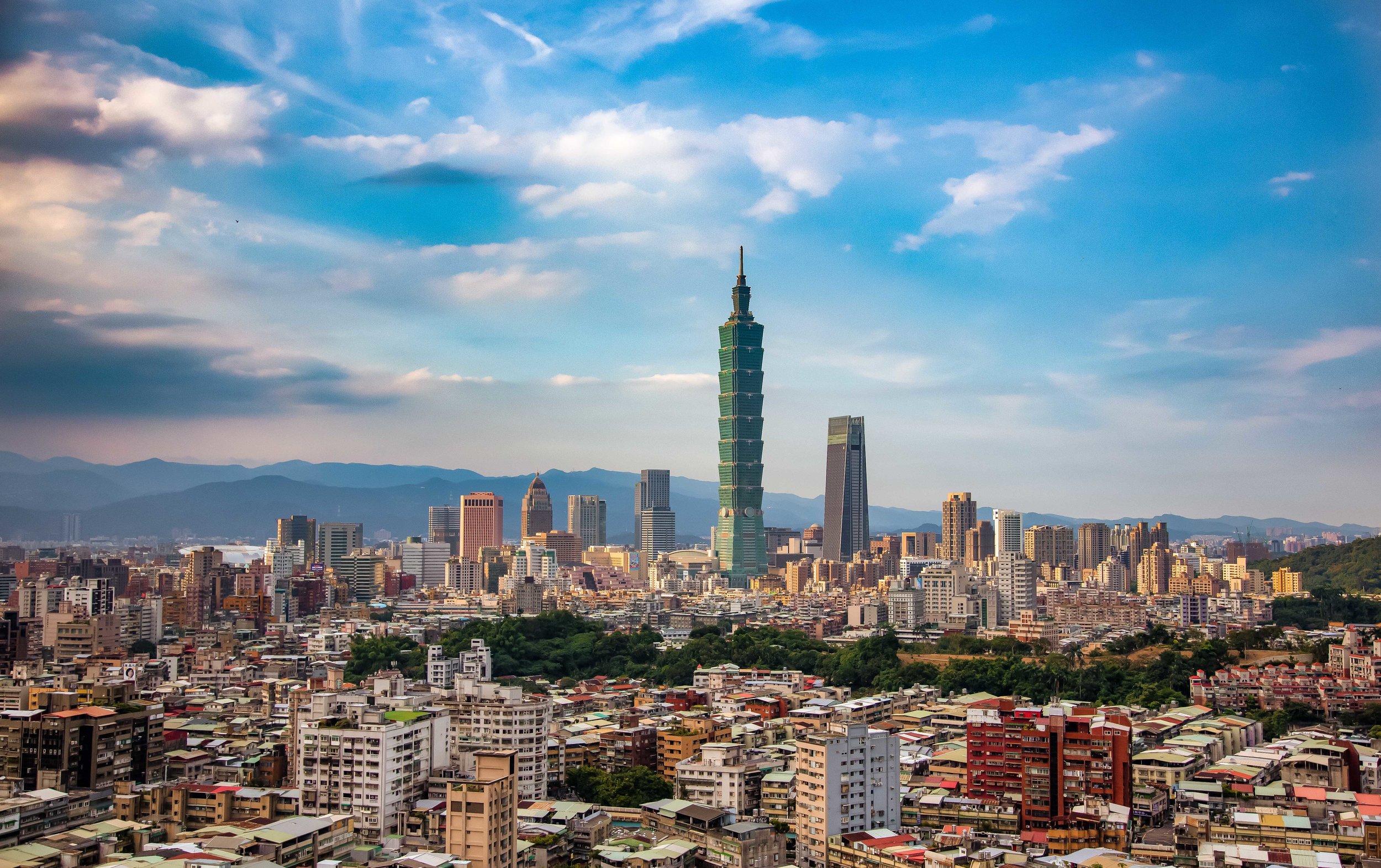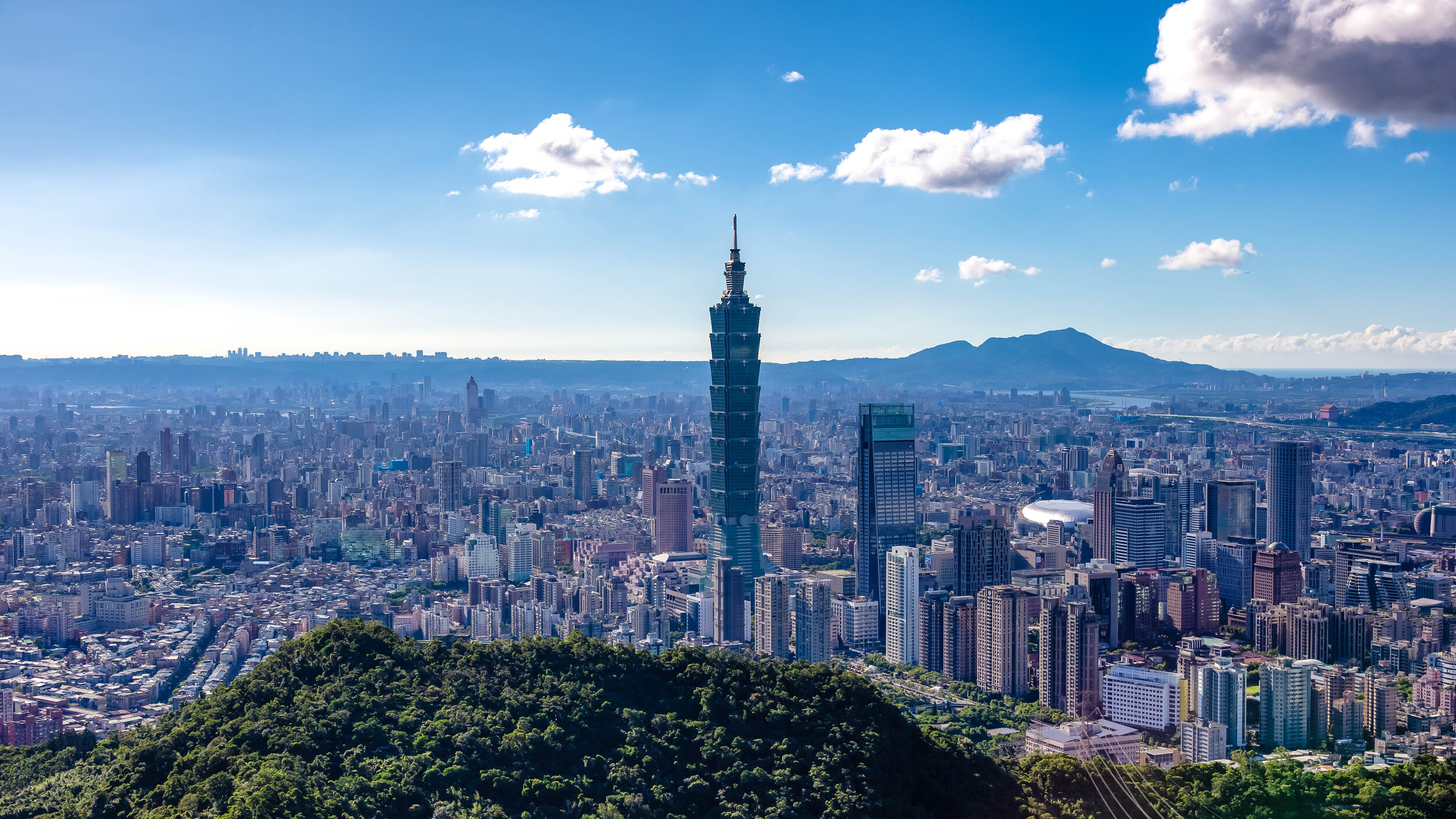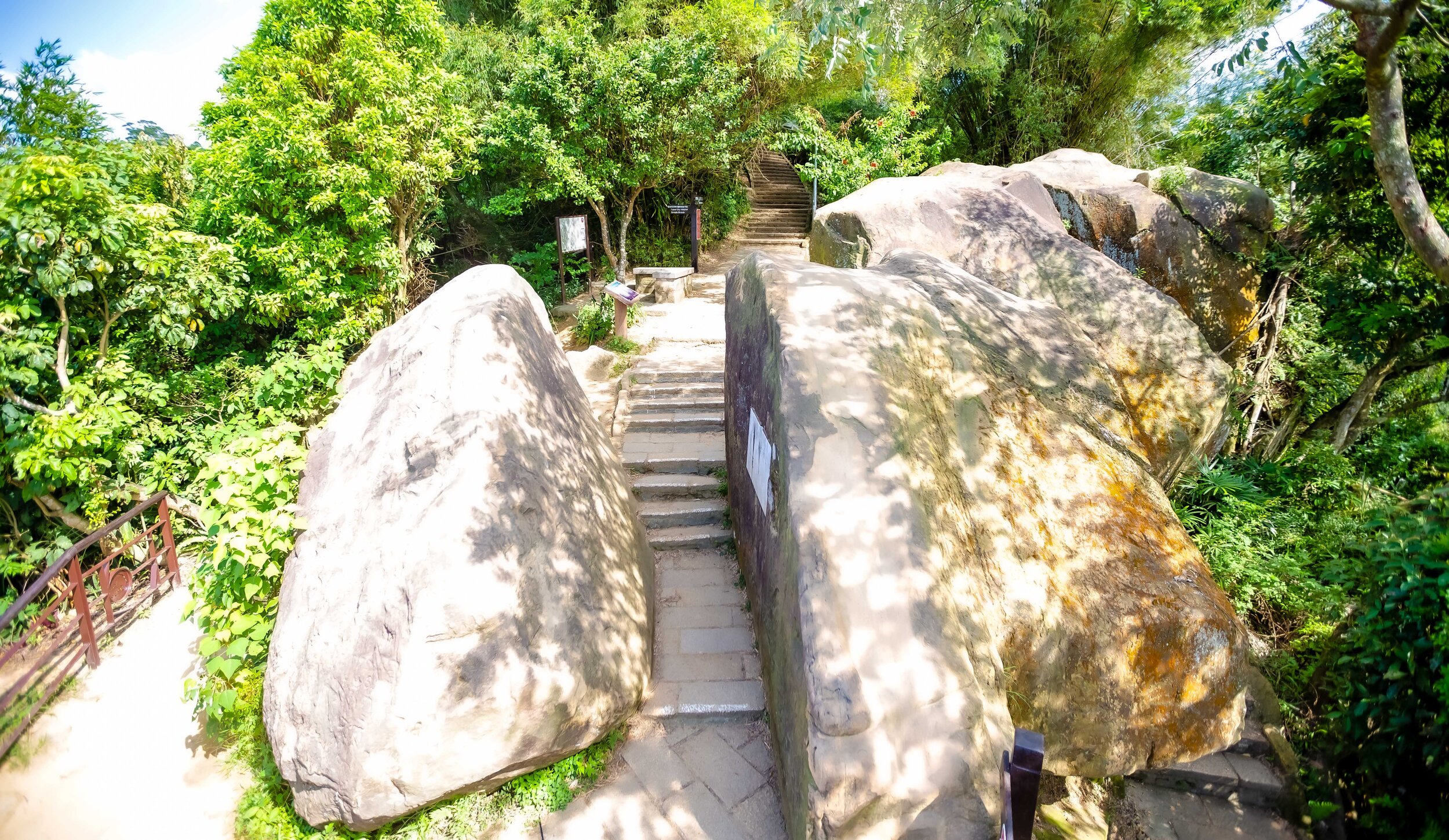Everyone wants to get that iconic shot of Taipei 101 and the Taipei cityscape while visiting Taiwan.
But how do you get it? Where should you go?
Taiwan’s rising popularity as a tourist destination means that it important that answers to these questions are readily available in order to help people make the most of their trip.
While the local government does try its best to attract tourists and provide the necessary information, they often do a poor job of the latter which means people have to to rely on guide books, travel sites and blogs for their travel tips and expertise.
Fortunately, there are some excellent resources out there helping to introduce the country these days and I’m happy that this website has been able to play a small role in that. I have to say though, even though I do enjoy personally responding to people who have questions - I have discovered that I’ve been spending quite a bit of time responding to the same questions over and over again.
So, even though I’m personally not a fan of list-style blogs, I think having something that I can actually direct people to, rather than answering each person individually might save us all some time!
So, if you’ve been looking for a helpful guide to (some of) the best locations to get a shot of the beautiful Taipei cityscape, I think this guide might be of use!
Before I start, I should mention a couple of things:
All of these locations are free of charge. I’m not promoting any businesses here.
Rooftop photos of the city are popular, but I’m not promoting that here.
Each location is accessible using Taipei’s excellent public transportation network.
I’m not including any of the popular ground-level locations frequented by Instagrammers.
If you want that beautiful cityscape photo, you’re going to have to do a bit of hiking to get it!
By far the most popular spot for tourists to get their cityscape photos is on the Elephant Mountain Hiking trail (象山登山步道).
The trail is so popular that it even has its own dedicated MRT station!
The problem with Elephant Mountain however is that everybody knows about it - No matter what day of the week you visit, you are going to have to line up to take photos and in most cases you’ll probably miss that beautiful sunset photo that you had your heart set on.
For those landscape photographers who want to get the iconic shot of the Taipei City landscape from this mountain, you’re going to have to arrive quite early in the day to reserve a spot for your tripod as the best locations are always packed with photographers.
Elephant Mountain might be one of the best locations for photos but it goes without saying that it is also one of the most popular, which makes taking photos more of a challenge.
Getting There - Take the MRT’s Red Line to Xiangshan Station (象山站) and then follow the signs that lead you to the trailhead. The hike to the top takes anywhere between ten and thirty minutes.
Link: Elephant Mountain (象山)
For those wanting to get shots from the iconic Elephant Mountain but also want to escape the crowds and get a different perspective of the city - Thumb Mountain and 9-5 peak are a great option that requires only about twenty to thirty more minutes of hiking.
Situated on the same trail as Elephant Mountain, the peak of Thumb Mountain is considerably higher, is less clogged with tourists and offers a wider perspective of the city that also includes green mountains in the foreground.
Likewise, the observation platform on 9-5 Peak offers probably the widest and most beautiful view of the cityscape that you are going to get on this side of the city.
If you want the iconic photo of Taipei but want something that stands out from almost every shot on Instagram, you’ll want to keep these two peaks in mind!
Getting There - Take the MRT’s Red Line to Xiangshan Station (象山站) and then follow the signs that lead you the trailhead. After passing by the peak of Elephant Mountain, follow the signs which will lead you to the peak of Thumb Mountain and then continue on to 9-5 Peak.
Link: Thumb Mountain (拇指山)
Looking for an alternative to Elephant Mountain to avoid the massive crowds of tourists?
Tiger Mountain might just be the answer for all your social anxieties!
This trail is very much similar to the Elephant Mountain hike in terms of location and how well-developed the trail is (they are actually part of the same system of trails) but it isn’t as well known in tourist circles as it is with locals.
When you hike Tiger Mountain you will be treated with amazing views of the city in a location that differs only slightly from what you get at Elephant Mountain. You can even continue your short hike and can easily connect with other peaks along the Four Beasts Trail (四獸山) - which all offer great views of the city.
It is also a considerably easier hike than Elephant Mountain and takes very little time to complete.
Getting There - Take the MRT’s Blue Line to Houshanpi Station (後山埤站) and from Exit 2 follow the signs that will lead you to the trailhead. Hiking this mountain doesn’t take a lot of time but you can easily make a day-trip of of the trails behind it that lead to other peaks.
Link: Tiger Mountain (虎山)
Fuzhou Mountain is a well-known alternative for locals who want to avoid the hordes of tourists on Elephant Mountain or on the other Nangang Mountain trails.
While not as popular in tourist circles, the mountain offers spectacular unobstructed views of the Taipei cityscape without the wait.
Situated in Fuzhoushan Park (福州山公園), the hike to the top takes a lot less time and energy than its more popular neighbours and it just so happens that this one is a personal favourite of mine.
Getting There - Take the MRT’s Brown Line to Linguang Station (麟光站) and then follow the signs across the street that lead you to the park. Once inside the forest park follow the signs that lead you to the peak of Fuzhou Mountain.
Link: Fuzhou Mountain (福州山)
Bishan Temple is a massive mountain-side temple in Taipei’s Neihu District - The temple is the largest of its kind in Taiwan, dedicated to the patron saint “Kaizhang Sheng Wang” is not only beautifully ornate but also provides visitors with beautiful views of the Taipei cityscape.
In recent years the temple has actually become more well-known for its beautiful night views of the city than its religious functions - but rest assured, Taiwanese visitors will always pay their respects before enjoying the view.
Likewise, you should also take some time to tour of the temple and the surrounding area.
This one doesn’t require much of a hike as the bus will drop you off near the entrance of the temple - simply walk up the stairs to the entrance and enjoy the view!
Getting There - Take the MRT’s Brown line to Neihu Station (內湖站) and from there walk to the bus stop at #452 Neihu Road, Section 2 (next to a small shrine) and wait for the #2 (小2) bus.
Link: Bishan Temple (碧山巖開漳聖王廟)
This mountain in Neihu (內湖) became extremely popular with locals a few years ago and for good reason - It offers amazing views of the city with beautiful mountains in the background.
The hike to the top takes about 20-30 minutes and even though its quite easy, it is really fun as you get to climb up the rock face of a mountain while enjoying beautiful panoramic scenery.
While at the top don’t forget to get a shot of yourself on the rock ledge that has become an internet sensation in Taiwan.
Getting There - Take the MRT’s Brown Line to Xihu Station (西湖站) and walk toward Tamkang University where you’ll see signs that lead you toward the Jinmian Mountain Trailhead (金面山登山步道).
Link: Jinmian Mountain (金面山)
Jiantan Mountain is a hiking trail that starts near the popular Shilin Nightmarket (士林夜市) and offers not only great views of the city (from the opposite side of the Keelung River) but also allows you to walk around the beautiful Grand Hotel and check out some cool temples.
The mountain has quite a few attractions and can be part of a much larger day-trip if you like, but for the purposes of this blog, people are going to want to head directly to the ‘Laodifang lookout’ (老地方觀景平台) where there are unobstructed views of the city.
This hike might be the longest of all the hikes I’m providing (around 1-2 hours) but you can take solace in the fact that once you’re done, you can visit the Shilin Nightmarket and fill your belly.
Getting There - Take the MRT’s Red Line to Jiantan Station (劍潭站) and from there cross the street and walk toward the Grand Hotel. You’ll see a temple on the side of the road. The trailhead is next to it.
Link: Jiantan Mountain (劍潭山)
Photography Tips
The old saying ‘The best camera is always the one you have with you’ applies quite well to most of these locations. What you’ll want to take into consideration is the kind of photos you want to take and how much equipment you’re willing to carry.
If you are looking to take beautiful, yet simple cityscape photos (to post on your social media), you can do that easily enough with the camera on your smartphone. That being said, a lot of people are like me and are more than willing to carry heavy camera gear up the mountains to get even better shots to bring back home.
No matter what you choose to do, there are a few things you’ll want to take into consideration to avoid the frustration of missing out on the perfect shot.
Smartphone Cameras
Smart phones aren’t particularly useful when it comes to ‘focus’ for night shots of people with the city in the background. It is either going to be one or the other. Never both. If you want a photo of yourself and the city, you’ll be better off hiking during the day.
If night shots are your only option, bring a light that you can put in front of your camera which will help the sensor focus with the lack of light.
You may want to consider purchasing a smart phone tripod at one of the night markets around the city - Having your phone stabilized for a shot always helps.
Some smart phones let you manually control your camera’s functions - If you can control your ISO, it could help get better results. If you download the Adobe Lightroom app for example, the free functions allow you to control your camera a bit more than the native camera apps do.
Don’t forget that your phone’s camera likely has ‘panorama’ mode. Take a panoramic shot while visiting so that you can post a 3D image on social media!
If you are using a filter app that makes you look really young, it’s likely to ruin your shot of the cityscape. Be careful with the apps you use. You can always edit your shots afterwards.
Last but not least - If you have a selfie-stick, don’t hit others in the face while taking photos!
Digital Cameras
If you plan on taking shots of the sunset and/or shots after dark, you’re absolutely going to need a tripod.
If you are bringing a tripod and want to set up in the perfect location for photos, in most cases, you’re going to have to arrive early to ensure that you get a good spot.
If you have them, you may want to bring some filters for the sunset.
Bracket your exposures - One of the most difficult things about shooting Taipei - and most cities - is all the artificial light that creates issues with dynamic range. If you bracket your exposures (HDR Mode) you’ll be able to capture balanced shots with higher contrast.
Shoot in ‘Aperture Priority Mode’ - This allows you to control everything in your camera and will save your photos from the disastrous effects of auto mode which compensates during low light.
Manual Focus allows for much sharper images than auto-focus and ensures that your camera focuses on the area that you want.
Locations Map
I hope that this guide proves useful if you’re planning a visit - If you have any questions or suggestions for other locations that I might have forgotten, feel free to comment below or send me an email.
I plan on updating this guide quite often, so check back for updates.
Have a great time in this beautiful city and take some nice shots!












































































